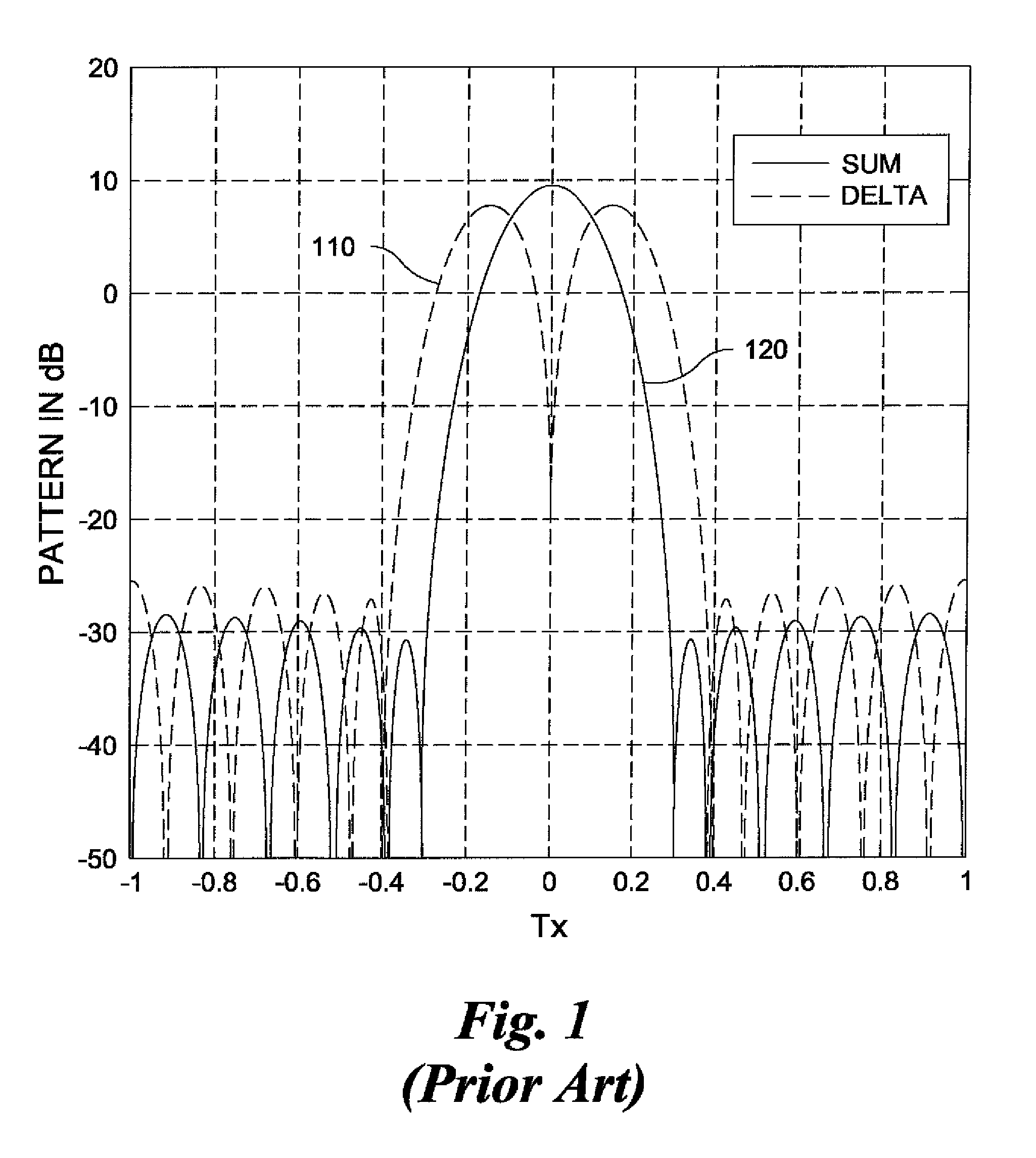Method and system for target detection and angle estimation based on a radar signal
a radar signal and target detection technology, applied in the field of radar systems, can solve the problems of excessive storage requirements, computationally expensive grid search implementation, and large computational burden
- Summary
- Abstract
- Description
- Claims
- Application Information
AI Technical Summary
Benefits of technology
Problems solved by technology
Method used
Image
Examples
Embodiment Construction
[0024]The following description of the preferred embodiments is merely by way of example and is not intended to limit the invention or its application.
[0025]The present invention relates, in an embodiment, to target detection and angle estimation in radar systems. FIG. 3 depicts a process in accordance for target detection and angle estimation based on receiving monopulse ratio data. The received monopulse ratio data may be generated based on monopulse beams generated by a beamformer. FIG. 3 depicts a process 300 in accordance with an embodiment of the invention comprising: (a) computing 330, based on received monopulse ratio data, using maximum likelihood estimation, a monopulse ratio estimate; (b) accessing 340 a value for angle estimation by searching 325 a table having monopulse ratio estimates to find a monopulse ratio estimate that is closest to, or the best value corresponding to, the monopulse ratio estimate determined in step 330, and retrieving 335 an angle value correspon...
PUM
 Login to View More
Login to View More Abstract
Description
Claims
Application Information
 Login to View More
Login to View More - R&D
- Intellectual Property
- Life Sciences
- Materials
- Tech Scout
- Unparalleled Data Quality
- Higher Quality Content
- 60% Fewer Hallucinations
Browse by: Latest US Patents, China's latest patents, Technical Efficacy Thesaurus, Application Domain, Technology Topic, Popular Technical Reports.
© 2025 PatSnap. All rights reserved.Legal|Privacy policy|Modern Slavery Act Transparency Statement|Sitemap|About US| Contact US: help@patsnap.com



